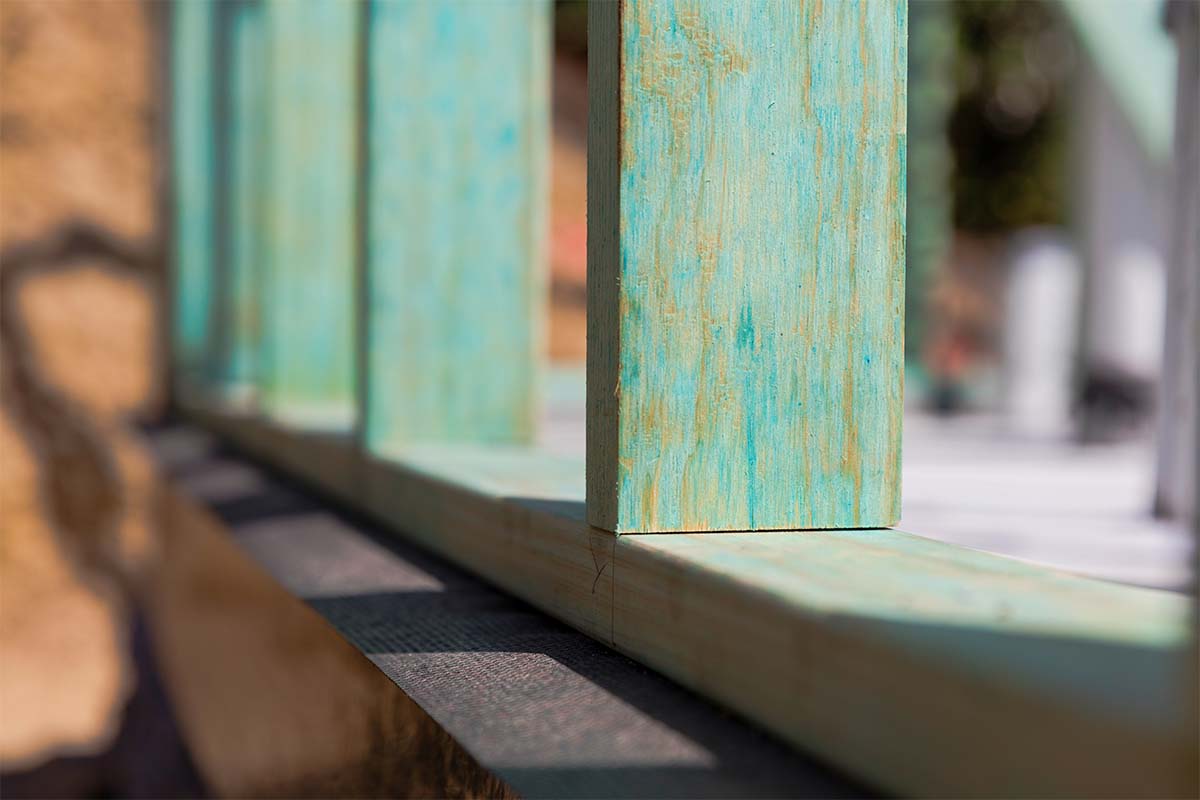While critical technical aspects associated with treated timber in construction remain unsolved, the ‘wood first policy’ is the wrong decision at the wrong time.
There needs to be better science based understanding of fire safety and health and environment issues. We need only look at treated timber data in New Zealand, issues associated with treated timber and end of life scenario, and a recent experimental case study on arsenic impact of treated timber in compost production in Christchurch to understand why.
Treated timber data and impacts
Rhodes and Dolan (2013) reported: “An estimated 5,000 tonnes of copper, chromium and arsenic (CCA) salt equivalent are used annually in New Zealand to treat an estimated 650,000 m3 of timber to various treatment grades” (Rhodes and Dolan).
While CCA is the most common types of treatment, in accordance with ECAN Report R13/31 in 2006 over 830,000 m3 of timber was treated in New Zealand using different treatment types (ECAN Report No. R13/31).
Treatment occurs as a necessary step for wood-based building components to achieve required durability performance to comply with New Zealand Building Code (NZBC).
This in turn raises well-being risks, issues of toxic elements such as arsenic, and health and environmental effects which have been investigated in past studies and literature.
ECAN Report R13/31 clarified that reuse of treated timber is only delaying dealing with the treated timber waste, rather than actually addressing the environmental problem (ECAN Report No. R13/31).
Sustainability conundrum – there is no end of life options for treated timber
It should be noted that a number of applications were identified where re-use of CCA treated wood would be inappropriate in the Rhodes and Dolan paper, confirming there is no sustainable end of life option for treated timber in:
- residential or domestic constructions;
- any application where there is repeated risk of skin contact;
- marine waters;
- agricultural purposes other than for livestock fence posts and permitted structural use; and
- any application where the treated wood may come into contact with intermediate or finished products intended for human and/or animal consumption.
(Wood Protection Association, 2004).
In this context, it is important to understand that treated timber isn’t actually recyclable and options for downcycling (producing a new product with lower quality than that of the base material) are very limited and may even be harmful to the environment.
This was identified in the ECAN Report No. R13/31, which stated: “The next most ‘simple’ form of recycling is the use of treated timber as a mulch or compost. The propensity for such products to leach arsenic at a relatively high rate due to their increased surface area quickly render them unfeasible as a useful outlet for waste treated timber.”
It was also explored in the Rhodes and Dolan (2013) paper: “Products such as particleboard, chipboard and oriented strand board (OSB) can theoretically be made with treated timber. However, there are drawbacks. Europe and the UK have contamination standards for the production of particleboard (and similar products) that limit the percentage of CCA treated timber that could be used in particleboard production to less than 1 percent. In New Zealand, 1 % of the total fibreboard and particleboard production in 2006 was 11,170 m3”.
Arsenic impact of treated timber in compost production
Researchers at Lincoln university recently conducted an experimental case study to investigate how treated timbers, ashes, and other contamination can impact arsenic concentration in compost production (Safa et. al 2020). The results showed that: “most treated timbers and all ashes of treated and untreated timbers contained significant amounts of arsenic” (Safa et. al 2020).
Key findings of this research include (Safa et. al 2020):
- the arsenic concentration is an important issue in the investigated compost productions, and that the arsenic of treated timber and ashes would be one of the important sources of arsenic;
- the arsenic concentration in H5 ranged from 1% (10,313 ppm) to 1.2% (11,868 ppm) of total weight. This meant, 1 kg of H5 timber was enough to increase the arsenic rate of 844 kg dry compost around 10 ppm; and
- the arsenic concentrations in H3 and H4 samples were between 1100 ppm and 2700 ppm in different samples. This meant that one kg of H3 and H4 timber on average was enough to contaminate 396 kg and 210 kg of dry compost respectively around 10 ppm.
On top of this, the NZ Herald recently reported that “according to the Ministry of Environment around 400,000 tonnes of noxious waste is being dumped in the nation’s landfills annually due to New Zealand’s ongoing use of toxic agents in treated timber due to its inability to be recyclable” (Toxic treated timber).
What is HERA’s view?
We understand that Government agencies are getting new support to reduce carbon emissions generated by construction of new buildings with the release of a procurement guide to help make these decisions. This comes amidst rumblings that Minister Stuart Nash will announce a formal wood first policy in the next few weeks.
While we don’t know the details of the potential policy or even for sure if it will eventuate, this is concerning. Carbon has clearly become a bigger focus, which is sensible. However, erroneous assumptions on the carbon performance of steel may lead to the preference of one building material over others.
This is especially inappropriate, given the evidence reviewed in this article shows treated timber is not as sustainable a construction material as it is being promoted to be. In fact, it has the potential to negatively impact our environment.
It supports our assertions that evidence needs to form the basis of decision making and that whole life cycle performance including end of life scenarios must be used to evaluate sustainability.

